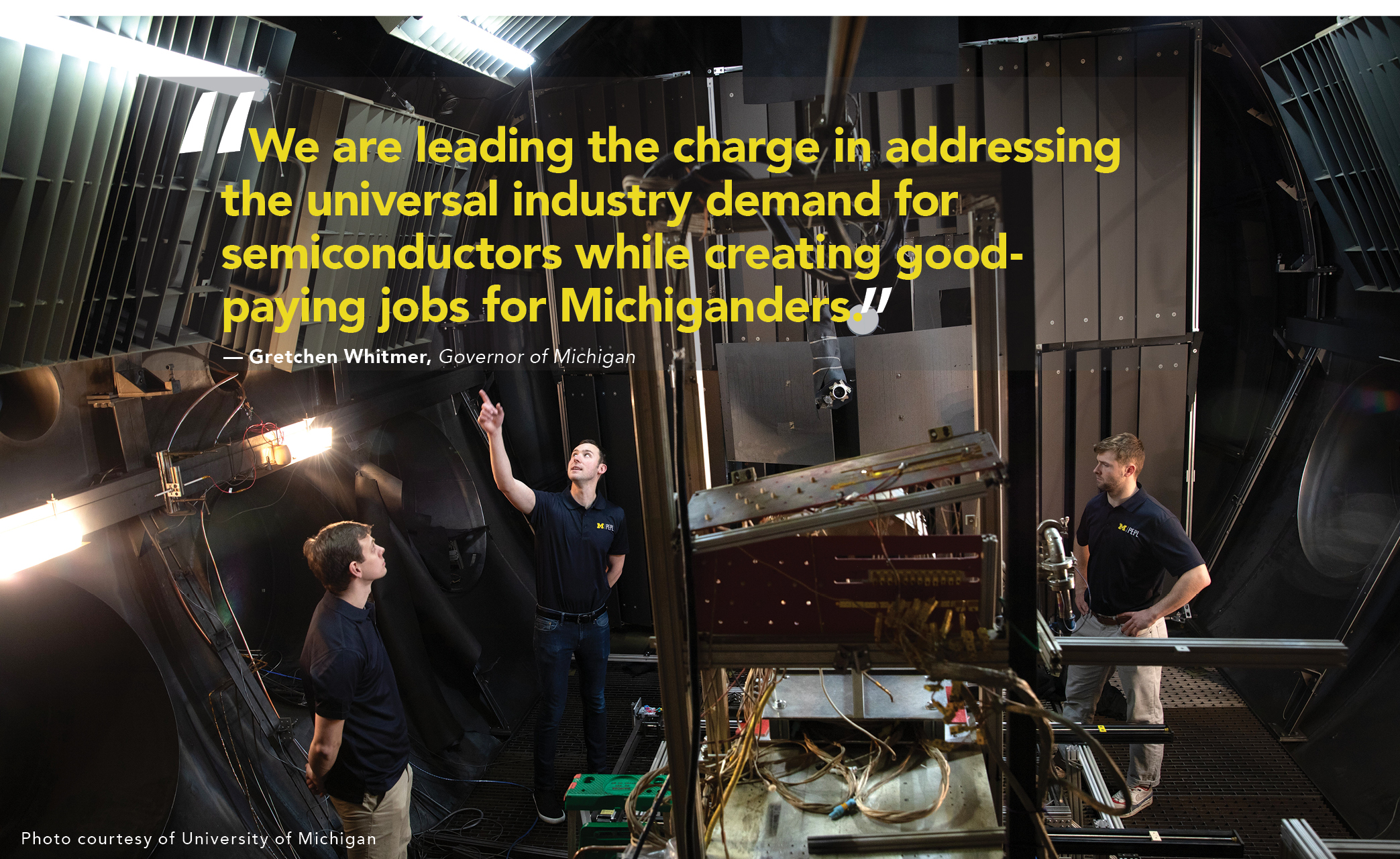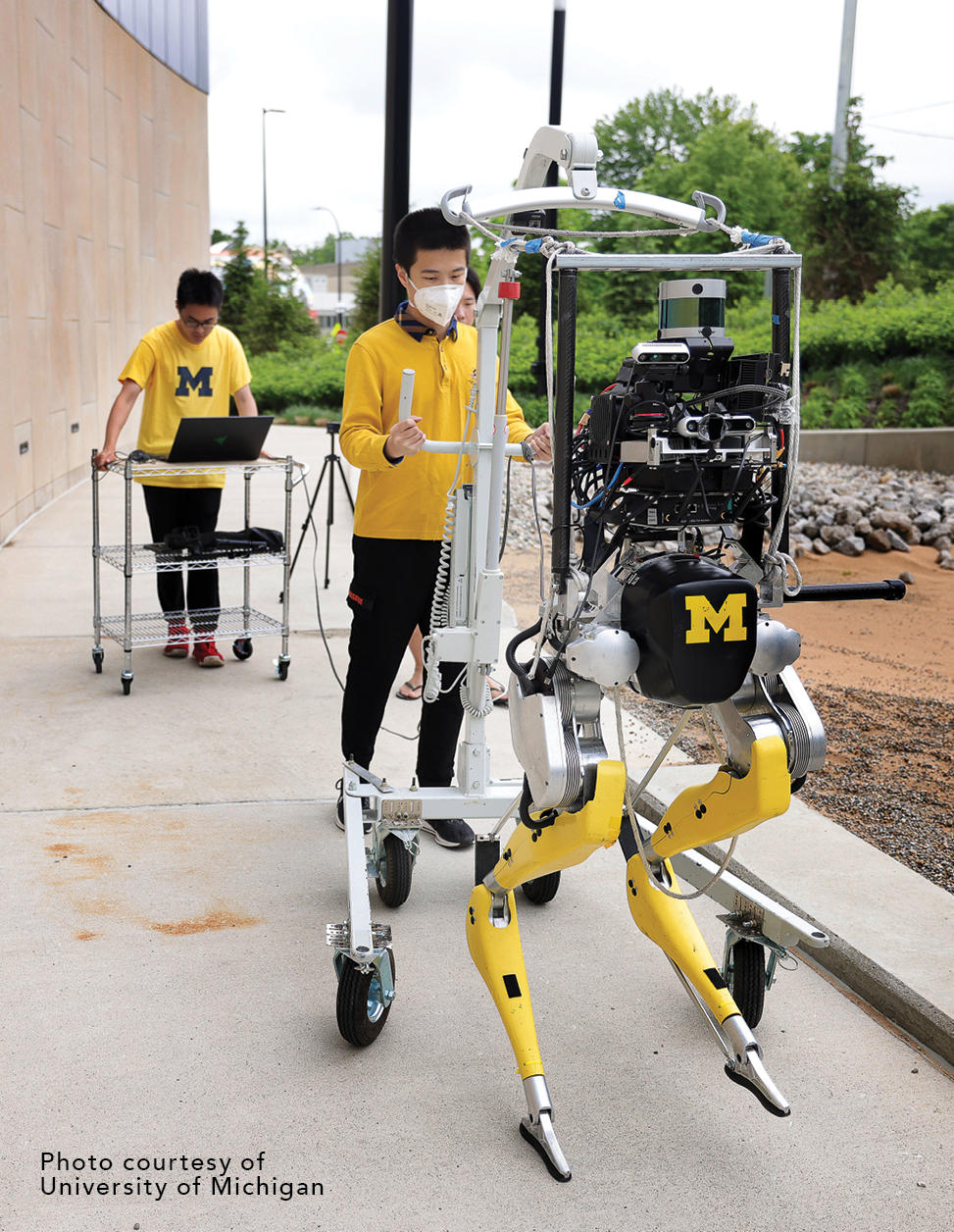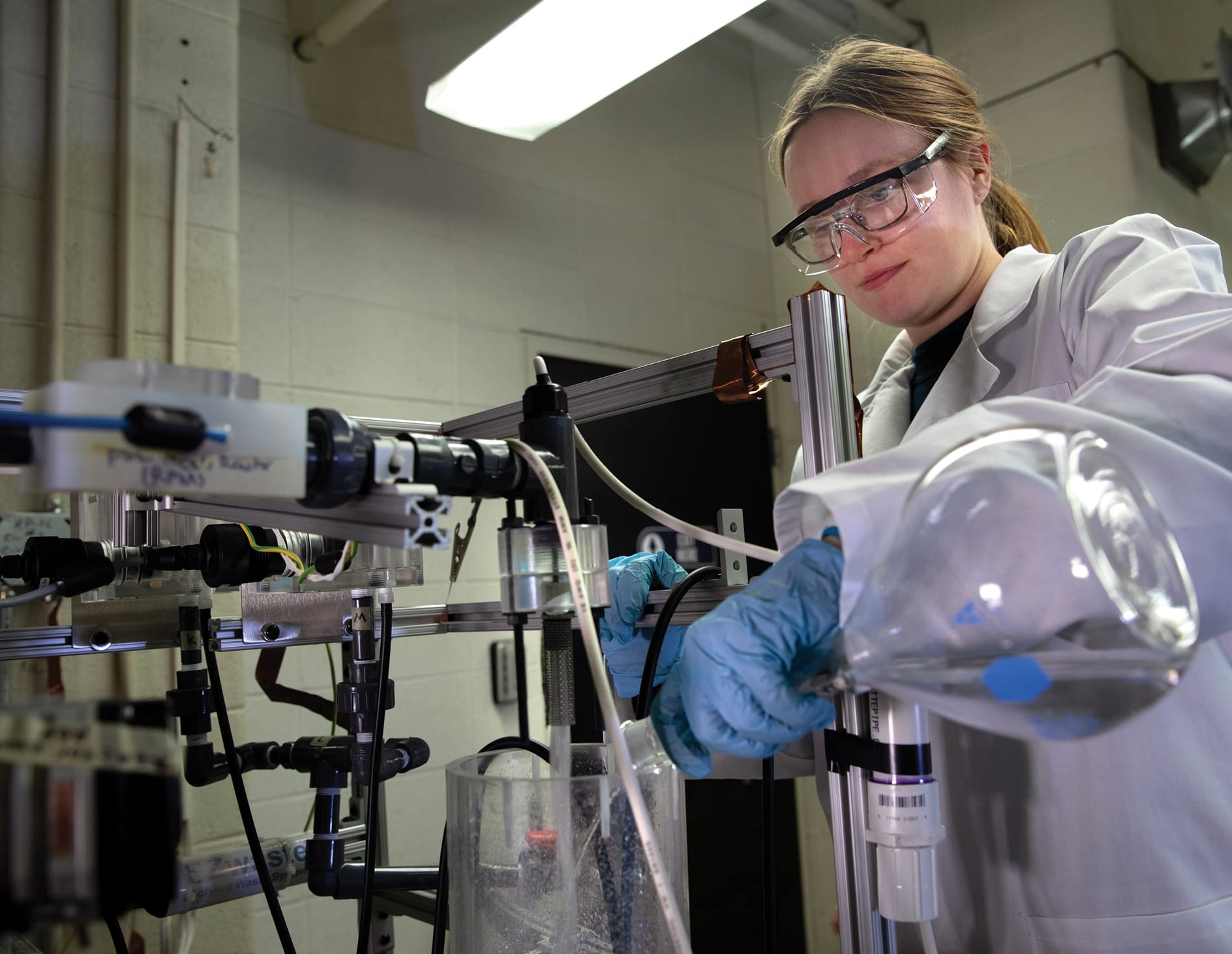Michigan’s research universities are creating pipelines of high-quality, eager talent who are invested in the state. Among Michigan’s 93 colleges and universities, eight are research universities. Each of these institutes of higher learning is attracting business leaders and investors who see the value in this workforce.
University of Michigan
Founded in 1817, the University of Michigan (U-M) was one of the nation’s first public universities. Known for its educational prowess, U-M consistently places third in top public university rankings. Both of the school’s locations, Ann Arbor and Dearborn, feature advanced research facilities and exceptional faculty.
According to U.S. News & World Report, U-M is home to more than 100 top 10 graduate programs. As educational leaders in engineering, public health, pharmaceuticals, nursing and biochemistry, it is no surprise that in 2022, the University of Michigan received $1.71 billion in total research expenditures.
With the launch of MI Hydrogen, a joint venture by the Office of the Vice President for Research, the College of Engineering and the School for Environment and Sustainability, U-M is once again making significant strides toward innovation. Due to the potential economic and environmental benefits of hydrogen, this collaboration of researchers, community associations, government officials and industry partners seeks to design the necessary research to accelerate hydrogen’s current industrial limits and usage. The discoveries made at U-M will be instrumental in developing affordable and sustainable clean energy strategies.
Michigan State University
Established in 1855, Michigan State University (MSU) was America’s first agricultural college and spearheaded a national movement that provided the necessary support for at least one college in every state to teach agriculture, mechanical arts and military tactics. The funding for these programs was distributed through land grants from the federal government. Therefore, the schools with this support became known as land-grant universities. By 1862, MSU was the nation’s premier land-grant university and has remained a leader amongst its peers ever since.
MSU’s graduate program in nuclear physics has been No. 1 in the country since 2010. With $710 million in research expenditures last year and 38 other programs ranked among the top 25 in America, MSU is a leader in education across numerous industries.
One of the school’s current research projects has brought MSU to the forefront of developing resilient food system strategies. In February, the U.S. Department of Agriculture bestowed a $10 million grant to a team of researchers, educators and extension experts led by the university.
The five-year project is focused on assessing the disruption issues, referred to as “shocks,” that food systems are susceptible to. These “shocks” lead to disturbances in the supply chain as well as food and nutrition security challenges. MSU researchers are working to evaluate supply chain issues, historical and projected shocks and alleviation strategies. The researchers plan to use AI and decision-support tools to simulate multiple “shocks” scenarios, including disruptions vulnerable populations might face.

“MSU is uniquely equipped to lead a large, interdisciplinary effort such as this because of our leadership in agricultural sciences, education, sociology, supply chain economics, sustainability and systems integration,” said Brent Ross, associate professor in the MSU Department of Agricultural, Food and Resource Economics. “In addition, our partners bring valuable and complementary expertise that helps us capture a variety of perspectives, as well as increase the scale to locations outside of Michigan that may be susceptible to different shocks.”
Michigan Technological University
Across the nation, Michigan Technological University’s graduate school is known as a leading public research institution. Situated on the shores of Lake Superior, Michigan Tech is home to over 70 graduate programs, including doctoral, master’s, certificates and online learning opportunities. The school’s second campus, The Michigan Tech Research Institute, is located across the state in Ann Arbor and boasts research projects in areas such as national and homeland security, informatics/biomedical sensing, robotics and autonomy, machine learning and more.
In January, Michigan Tech, along with four partners — Discovery Center & Pier, Northwestern Michigan College, 20Fathoms and Traverse Connect — received funding for the development of a Freshwater Research and Innovation Center in Traverse City. The $60 million federal grant will be funneled toward building the new facilities on Discovery Pier.
“The development of the Freshwater Research and Innovation Center will ensure that the Grand Traverse region is well-positioned to be the global epicenter for freshwater research, industry and innovation,” said Warren Call, president and CEO of Traverse Connect. “The partnership of key educational institutions and nonprofit organizations will generate tremendous economic opportunity for our region by attracting entrepreneurs and innovators working to protect and improve the Great Lakes ecosystem.”
During that same month, The U.S. Department of Energy awarded $2.5 million to Michigan Tech to aid in the university’s efforts to help mines in Michigan’s Upper Peninsula and Minnesota achieve net-zero emissions while extracting critical minerals from mine tailings.
Oakland University
 In the beginning of 2023, Oakland University (OU) accomplished a monumental achievement: The university’s Department of Bioengineering received an ABET (Accreditation Board for Engineering and Technology) accreditation. In the wake of this accomplishment, OU has made even more exciting announcements, furthering its innovative efforts.
In the beginning of 2023, Oakland University (OU) accomplished a monumental achievement: The university’s Department of Bioengineering received an ABET (Accreditation Board for Engineering and Technology) accreditation. In the wake of this accomplishment, OU has made even more exciting announcements, furthering its innovative efforts.
In March, OU, located in Auburn Hills and Rochester Hills between Detroit and Flint, announced that its Department of Computer Science and Engineering (CSE) was launching a new Bachelor of Science in cybersecurity degree program. As an institute of higher learning with a strong reputation in research and technology, OU created this new program as a response to the national and global need for competent workers in this expanding industry.
During the same month, OU also revealed it joined the Midwest Regional Network to Address National Needs in Semiconductor and Microelectronics coalition. This collective is made up of universities and colleges located in four states: Michigan, Ohio, Illinois and Indiana. Tailgating the passage of the CHIPS Act, this collaboration strives to use existing research and curriculum to elevate innovation in microelectronics, semiconductors and supply chains to prepare the next generation of engineers for the future needs of the national workforce.
Through the strength of these partnerships and the ongoing efforts of all the state’s colleges, universities and trade schools, Michigan is being proactive and intentional in its workforce development as it prepares talent across the state for in-demand occupations that will innovate the future.

